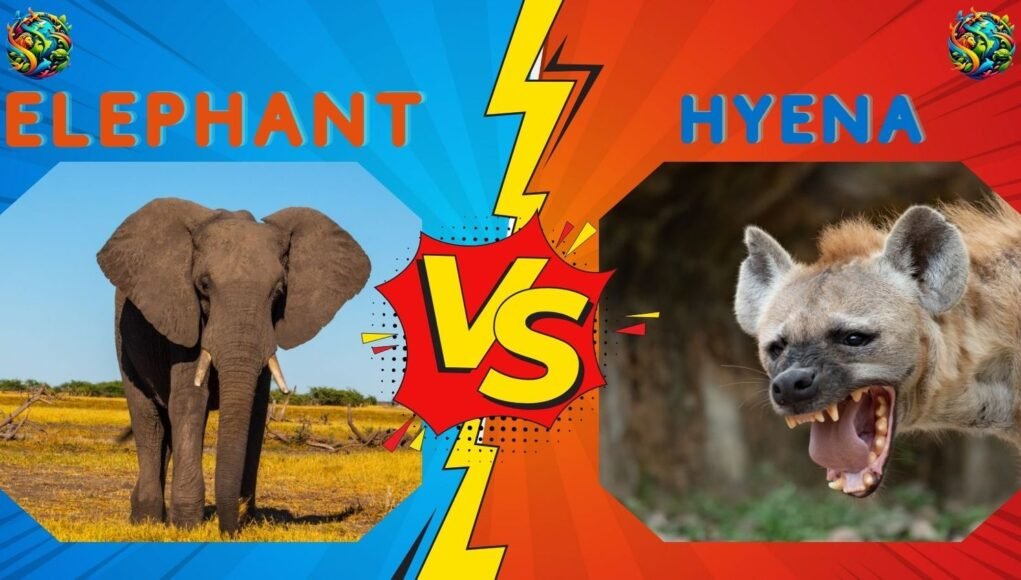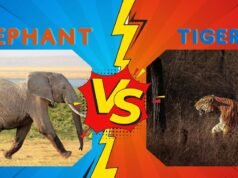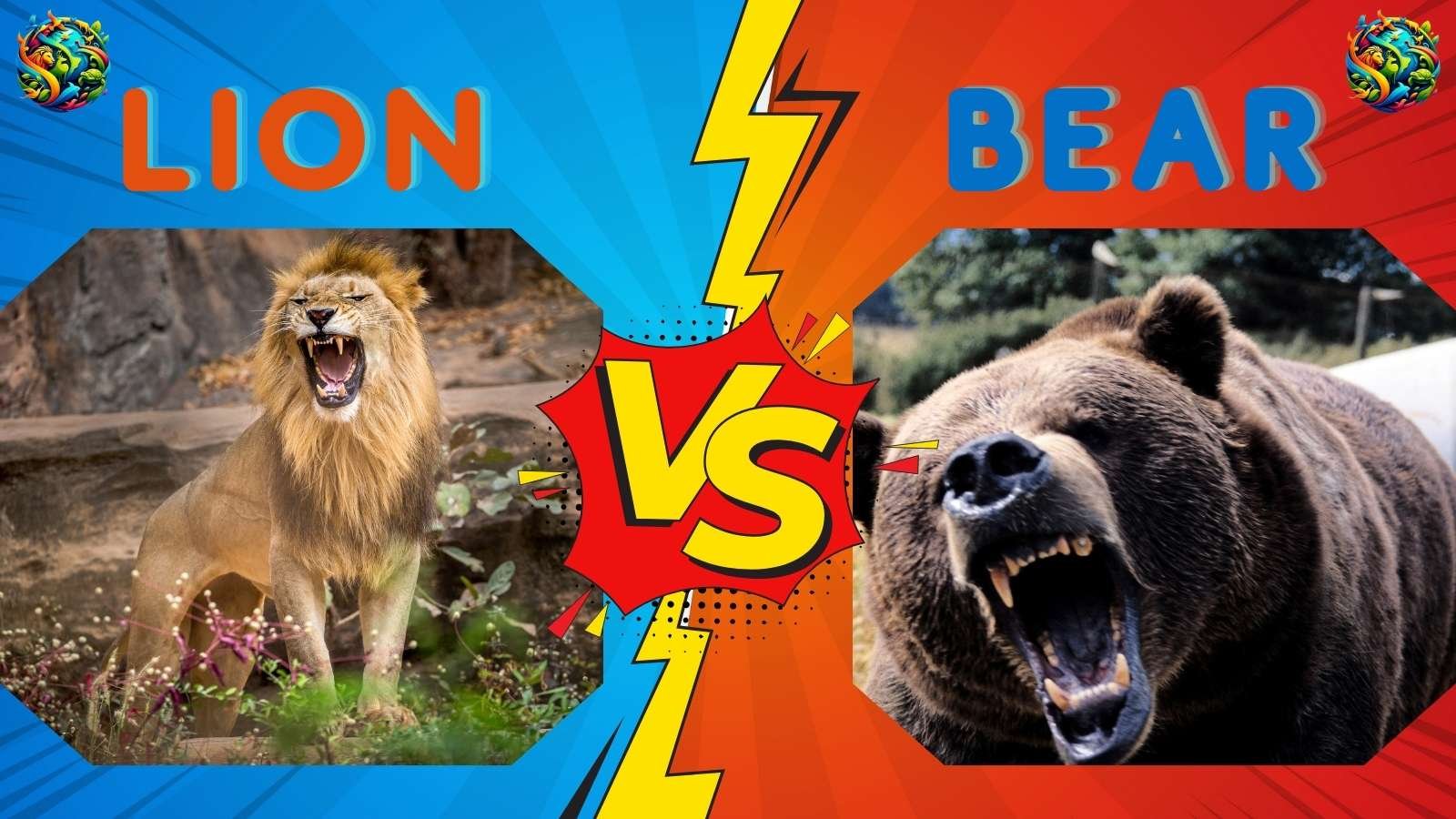Elephant Vs Hyena: Ultimate Showdown of Strength & Strategy!
An in-depth analysis of two iconic African species.
Introduction
The vast and diverse landscapes of Africa host an incredible array of wildlife, each species uniquely adapted to its niche. Among these, the Elephant, a colossal herbivore, and the Hyena, a highly intelligent and formidable carnivore, represent two vastly different evolutionary paths. While direct conflict between these two is rare and often circumstantial, a comparative analysis of their biology, behavior, and capabilities offers profound insights into their individual survival strategies and ecological roles. This article delves into an elephant and hyena territorial conflict analysis, exploring their physical prowess, strategic acumen, and the intricate dynamics that govern their existence in shared habitats.
Understanding the differences and potential interactions between these magnificent creatures not only satisfies curiosity but also deepens our appreciation for the complex ecosystems they inhabit. From the pachyderm’s immense physical presence to the carnivore’s cunning pack tactics, this comparison aims to highlight the remarkable adaptations that make each species a marvel of the natural world. We will dissect their fundamental attributes, compare their strengths and weaknesses, and ponder hypothetical encounters to determine how their distinct strategies might clash.
Basic Information on the Animals
Elephant (African Bush Elephant)
- Scientific Name: Loxodonta africana
- Size: Largest land animal; males can weigh up to 6,000 kg (13,200 lbs) and stand over 4 meters (13 feet) tall at the shoulder.
- Habitat: Diverse habitats across Sub-Saharan Africa, including savannas, forests, and deserts.
- Social Behavior: Highly social, living in complex, matriarchal herds of related females and their offspring. Males typically live solitarily or in bachelor groups.
- Diet: Herbivore; primarily grazers and browsers, consuming grasses, leaves, bark, roots, and fruits.
- Speed: Can reach speeds of up to 40 km/h (25 mph) in short bursts.
- Weaponry: Massive tusks (elongated incisors), a powerful trunk capable of crushing and lifting, immense body mass used for charging and stomping, and thick skin offering protection.
Hyena (Spotted Hyena)
- Scientific Name: Crocuta crocuta
- Size: Medium-sized carnivore; females are larger than males, weighing up to 80 kg (176 lbs) and standing about 0.9 meters (3 feet) tall at the shoulder.
- Habitat: Wide range across Sub-Saharan Africa, including savannas, grasslands, and semi-deserts.
- Social Behavior: Lives in complex, matriarchal clans that can number up to 80 individuals, exhibiting a fission-fusion society.
- Diet: Carnivore; highly adaptable hunters, often preying on medium to large ungulates, but also opportunistic scavengers.
- Speed: Capable of reaching speeds up to 60 km/h (37 mph), excellent endurance runners.
- Weaponry: Exceptionally powerful jaws with the highest bite force relative to body size among terrestrial mammals, sharp teeth, and keen senses; relies heavily on pack cooperation.
Key Comparisons of Elephant vs Hyena
When comparing physical strength of elephant and hyena, it becomes clear that these animals operate on entirely different scales. Their differing physical attributes dictate vastly distinct survival and interaction strategies.
- Strength: The African elephant possesses unparalleled physical strength, capable of pushing down trees, lifting heavy objects with its trunk, and delivering crushing blows with its feet or tusks. Its sheer mass is an overwhelming force. While the spotted carnivore is incredibly strong for its size, able to dismember carcasses and drag prey, it cannot compare to the raw power of the pachyderm.
Winner: Elephant - Bite Force: This is where the mighty elephant is decisively outmatched. Hyenas have an average bite force of around 1,100 PSI (pounds per square inch), one of the strongest among mammals, specifically evolved to crush bones and extract marrow. The giant’s bite force (from molars) is strong for grinding vegetation, but its primary offensive “bite” comes from its trunk’s crushing power and tusks, not jaw strength.
Winner: Hyena - Speed: The spotted hunter is a formidable runner, reaching speeds of up to 60 km/h (37 mph) and maintaining high speeds over long distances, crucial for its elephant and hyena hunting strategies compared. The large herbivore, despite its size, can charge at up to 40 km/h (25 mph) for short bursts, but lacks the sustained agility and speed of the smaller predator.
Winner: Hyena - Defense: The massive herbivore’s primary defense is its immense size, thick skin, formidable tusks, and the protection offered by its herd. It can easily deter most predators by charging or stomping. The smaller carnivore relies on its sharp senses, agility, and crucially, the strength in numbers of its clan. A lone hyena is vulnerable, but a pack is a potent defensive and offensive unit. For individual defense against most threats, the giant is superior.
Winner: Elephant - Fighting Tactics: When it comes to engagement, the giant employs direct force: charges, tusk thrusts, and powerful stomps. Its strategy is one of overwhelming power. The spotted hunter, in contrast, uses cunning, speed, and coordinated pack attacks, aiming to wear down and isolate prey or enemies, often targeting vulnerable areas. The effectiveness of their fighting tactics is highly dependent on the context and the number of individuals involved.
This initial elephant weight vs hyena weight comparison starkly illustrates the disparity in their physical domains. Despite the size difference, each creature is perfectly equipped for its role within the ecosystem.
Behavior and Intelligence Comparison
Delving into elephant versus hyena behavior differences reveals two highly intelligent species, albeit with their intelligence manifesting in ways suited to their respective ecological niches and social structures.
- Emotional Intelligence: Elephants are renowned for their profound emotional depth. They exhibit grief, joy, compassion, and self-awareness. Their complex social bonds, including ritualistic greetings and mourning for deceased kin, underscore a rich emotional life. While the spotted hunters’ emotional range is less understood in human terms, they show strong social bonds within their clans, cooperative care for young, and display clear signs of stress or excitement.
- Problem-Solving: Both species are adept problem-solvers. The pachyderm can figure out how to access difficult-to-reach food, remember water sources over vast distances, and even use tools (like branches to swat flies or dig). The carnivore demonstrates complex problem-solving in hunting, coordinating elaborate strategies to corner prey, and overcoming obstacles to access carcasses. They are known for their ingenuity in exploiting opportunities.
- Teamwork and Social Structure: The hyena pack dynamics versus elephant herd behavior highlight contrasting yet equally effective social organizations. Elephant herds are matriarchal, with generations of females guided by an experienced matriarch. Their teamwork is seen in collective defense of calves, sharing knowledge, and resource utilization. Spotted hyenas live in highly structured matriarchal clans, exhibiting a “fission-fusion” society where individuals move between smaller subgroups. Their teamwork is critical for successful large-prey hunting, territorial defense, and raising young in communal dens.
- Learning and Communication: Elephants are capable of significant learning throughout their long lives, passing down knowledge across generations. They communicate through a vast repertoire of vocalizations, including infrasound (too low for human hearing), body language, and chemical signals. Hyenas also learn quickly from experience and observation within their clan. Their communication is equally sophisticated, involving a range of calls (whoops, giggles, growls), scent marking, and complex body postures to maintain clan cohesion and coordinate activities.
The intelligence of both species profoundly impacts their survival. The elephant’s memory and social learning are vital for navigating its environment and finding resources, while its emotional bonds foster herd stability. The hyena’s problem-solving and cooperative abilities are crucial for efficient hunting and defending resources in a competitive landscape. Each has developed a cognitive toolkit perfectly suited to its unique challenges.
Fight Scenario: Elephant vs Hyena
While direct, unprovoked confrontations are exceedingly rare due to their vastly different sizes and behaviors, examining hypothetical fight scenarios helps us understand the strategic advantages and disadvantages of each.
Scenario 1: One-on-one battle (Elephant vs. Single Hyena)
In a direct, one-on-one confrontation between a healthy adult elephant and a single spotted hyena, the outcome would be unequivocally in favor of the giant herbivore. The sheer disparity in size and mass is overwhelming. A single hyena, despite its potent bite force, would be a mere nuisance to an adult pachyderm. The colossal animal could easily crush the smaller carnivore with a single stomp of its foot, impale it with a tusk, or toss it aside with its powerful trunk. The hyena’s only chance would be immediate flight, as its speed and agility, while impressive, would be insufficient to inflict any significant, debilitating injury on its massive opponent.
Reasoning: The individual hyena lacks the means to penetrate the thick hide of the elephant or overcome its immense defensive capabilities. Its tactics rely on sustained harassment and group effort, which are absent in this scenario. The elephant’s primary weapons — tusks, trunk, and feet — are lethal to anything of the hyena’s size.
Likely Outcome: Elephant wins decisively.
Scenario 2: Group or pack vs individual fight (Elephant vs. Hyena Pack)
A more nuanced scenario involves an adult elephant facing a large, coordinated hyena pack (e.g., 10-20 individuals). A hyena pack can successfully deter or even kill formidable predators like lions, especially if outnumbered. However, a healthy adult elephant presents a unique challenge. While the pack would certainly harass, snap, and attempt to inflict superficial wounds, directly bringing down a full-grown, healthy individual is highly improbable for them. Their tactics would likely involve attempts to tire the animal, nip at its legs or trunk, and exploit any existing vulnerabilities.
The adult giant, however, is a living tank. It can deliver devastating charges that scatter the pack, use its trunk to lash out, its tusks to gore, and its feet to crush any persistent attackers. The risk of serious injury or death to multiple pack members would likely deter a full-scale assault unless the pachyderm was old, sick, or a vulnerable calf. Calves are, indeed, targets for hyena packs, and the herd’s collective defense is paramount for their survival. Against a healthy adult, the pack might cause discomfort, but would rarely succeed in killing it. Their strategic goal might be to separate a calf or drive the giant away from a coveted waterhole or resource.
Likely Outcome: Elephant (adult) prevails, driving off or inflicting casualties on the pack. A vulnerable calf might be at risk.
Elephant vs Hyena — Who Would Win?
After a detailed analysis, determining an ultimate “winner” depends heavily on the context of the encounter. However, in any direct physical confrontation, the sheer scale of the elephant grants it a decisive advantage.
| Metric | Elephant | Hyena | Winner (Context Dependent) |
|---|---|---|---|
| Physical Strength | Immense; can push trees | Strong for its size; bone-crushing | Elephant |
| Bite Force | Strong (molars for grinding) | Exceptional (1100 PSI); bone-crushing | Hyena |
| Speed | Up to 40 km/h (short bursts) | Up to 60 km/h (sustained) | Hyena |
| Defense | Size, tusks, trunk, herd protection | Pack numbers, agility, powerful bite | Elephant (individual) |
| Intelligence | High (emotional, problem-solving, memory) | High (social, problem-solving, hunting) | Draw (different applications) |
| Individual Survival (vs. each other) | Superior | Inferior | Elephant |
| Group Survival (vs. threats) | Superior (herd defense) | Superior (pack hunting & defense) | Draw (specialized) |
In a direct confrontation, an adult elephant’s sheer size and defensive capabilities make it virtually invulnerable to a hyena, even an entire pack. While the carnivore’s bite force is incredible, it lacks the means to apply it effectively against such a massive target in a life-threatening way. Their strength lies in cooperative hunting of vulnerable prey, not in battling a healthy giant.
The critical factor in an individual fight scenario is the elephant weight vs hyena weight comparison. This fundamental difference dictates the overwhelming advantage of the larger animal.
Key Reasons the Elephant Triumphs in Direct Conflict:
- Overwhelming Size and Mass: Its immense body acts as an impenetrable shield and a crushing weapon.
- Lethal Tusks and Trunk: Capable of impaling, striking, or tossing a smaller opponent with ease.
- Powerful Stomp: A single footfall can be instantly fatal to a hyena.
- Thick Hide: Provides substantial protection against the carnivore’s teeth and claws.
- Defensive Posture: The adult can easily ward off or eliminate threats that are orders of magnitude smaller.
The Elephant vs Hyena
In conclusion, the comparison between the elephant and the hyena offers a fascinating study in evolutionary adaptation and ecological specialization. These two titans of the African savanna, though sharing the same vast landscapes, occupy entirely different ecological niches and possess capabilities optimized for their respective roles. The elephant stands as an undisputed symbol of brute strength, wisdom, and an ecosystem engineer, while the hyena embodies cunning, incredible bite force, and the power of sophisticated social cooperation.
While a hypothetical “ultimate showdown” heavily favors the pachyderm in any direct physical confrontation due to its sheer scale, it’s crucial to recognize that nature rarely pits such disparate creatures against each other in existential battles. Instead, their interactions are typically subtle, driven by resource availability, territorial boundaries, and the protection of their young. Both species are highly intelligent, complex animals that have perfected strategies for survival in a challenging environment. This exploration reinforces the factual credibility of nature’s design, where each creature, no matter its size or diet, holds a vital place in the intricate web of life. Understanding these dynamics enhances our appreciation for the biodiversity we strive to protect.
What are your thoughts on this comparison? Share your insights and let us know what other animal matchups you’d like to see analyzed!




